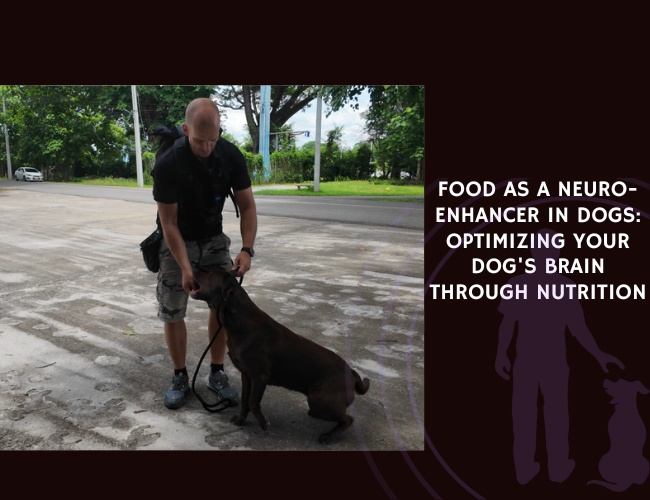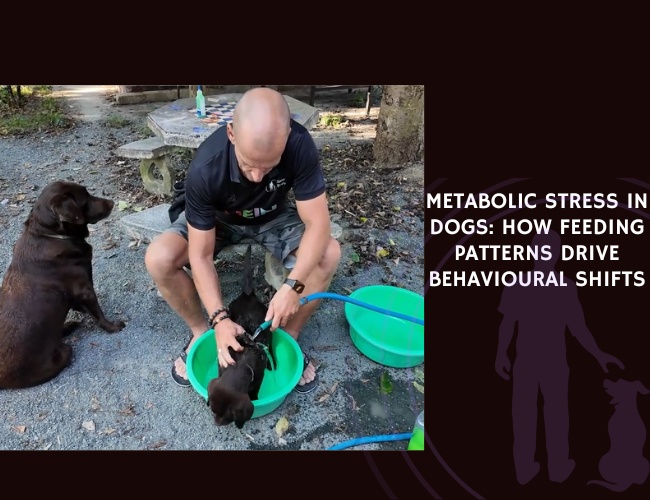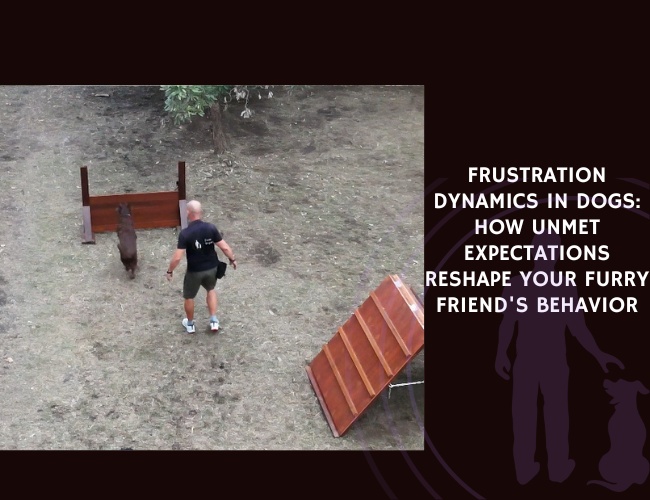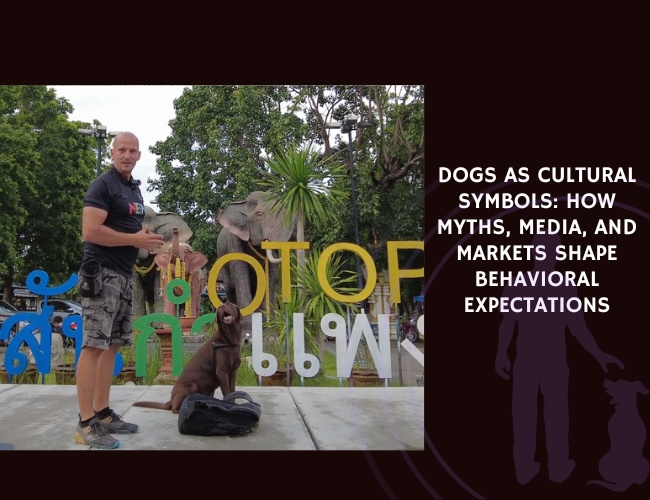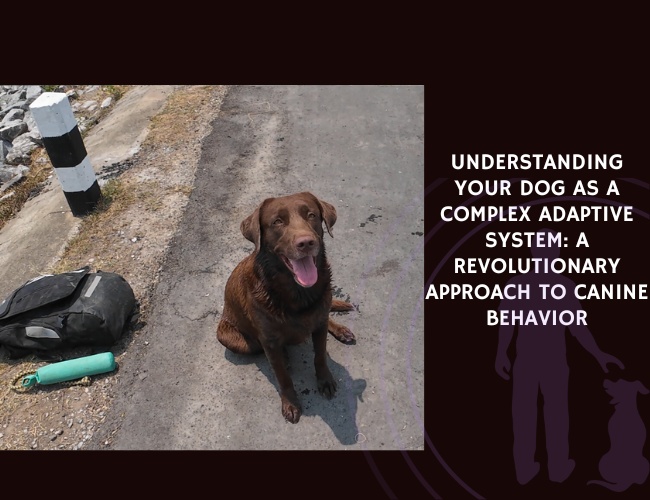Introduction
Have you ever noticed your furry friend suddenly become statue-still, as if time itself has paused? This isn’t defiance or stubbornness—it’s one of nature’s most ancient survival mechanisms at work. The freeze response, a deeply misunderstood aspect of canine behavior, tells a story of survival, adaptation, and the complex emotional world of our four-legged companions.
For centuries, we’ve recognized the “fight or flight” responses in animals, but the freeze response—equally important yet often overlooked—deserves our attention and understanding. When your dog freezes, they’re not being difficult or ignoring you. Instead, their body is engaging in a sophisticated neurological response that has protected countless generations of their ancestors from danger.
In this comprehensive guide, let us walk you through the fascinating science behind the freeze response, help you recognize its signs, and most importantly, show you how understanding this behavior can transform your relationship with your canine companion. Whether you’re a seasoned dog owner or considering bringing a pup into your life, this knowledge will equip you with the tools to create a more trusting, supportive environment for your four-legged friend. 🐾
Understanding the Neurobiology: What Happens in Your Dog’s Brain
When your dog experiences the freeze response, a remarkable cascade of neurological events unfolds within milliseconds. This isn’t simply your pup “choosing” to stop moving—it’s their brain’s sophisticated survival system taking control.
The Amygdala: Your Dog’s Alarm System
At the heart of this response lies the amygdala, a small almond-shaped structure deep within your dog’s brain. Think of it as your dog’s personal security system, constantly scanning the environment for potential threats. When the amygdala detects danger—real or perceived—it sounds the alarm, triggering an immediate response throughout your dog’s body.
In dogs who’ve experienced trauma, this alarm system can become hypersensitive, much like a smoke detector that goes off when you’re just making toast. This amygdala hypersensitivity means your dog might freeze in situations that seem perfectly safe to you, but trigger deep-seated memories or fears in them.
The Autonomic Nervous System: The Body’s Control Center
Your dog’s autonomic nervous system operates like a sophisticated control panel with two main switches: the sympathetic system (think “action mode”) and the parasympathetic system (think “rest and conserve mode”). During a freeze response, the parasympathetic system takes charge in a unique way—not to promote relaxation, but to create a state of protective immobility.
This biological response served their wild ancestors well. When a predator was nearby and running would attract attention, freezing could mean the difference between life and death. Your modern dog carries this ancient wisdom in their DNA, even if the “predator” is now a vacuum cleaner or an unfamiliar visitor.
The Periaqueductal Gray: The Freeze Commander
Deep in your dog’s brainstem lies the periaqueductal gray (PAG), which acts as the command center for the freeze response. When activated, the PAG essentially hits the “pause” button on your dog’s motor functions. This isn’t voluntary—your dog can’t simply “snap out of it” any more than you could will your heart to stop beating.
Understanding this involuntary nature is crucial. When we recognize that freezing is not a choice but a biological imperative, we can approach our frozen dogs with compassion rather than frustration.
Behavioral Signals
Reading Your Dog’s Silent Communication
Recognizing the freeze response requires us to become fluent in our dogs’ subtle body language. Unlike the obvious signs of fear like cowering or the clear signals of aggression like growling, freezing can be deceptively quiet.
Physical Manifestations of Freezing
When your dog enters a freeze state, their body undergoes several telltale changes:
- Muscle tension: Their entire body becomes rigid, as if every muscle is holding its breath
- Breathing changes: Watch for rapid, shallow breaths or, conversely, holding their breath entirely
- Eye signals: Pupils often dilate dramatically, and you might notice the “whale eye” where the whites become visible
- Postural cues: Their weight distribution becomes uneven, often leaning away from the perceived threat
- Tail position: The tail typically tucks or becomes completely still, losing its usual expressive movement
The Spectrum of Freezing
Not all freeze responses look identical. Some dogs exhibit what we call a “soft freeze”—they might simply pause mid-movement, appearing thoughtful rather than terrified. Others experience a “hard freeze,” becoming so rigid they seem almost catatonic.
You might notice your dog freezing in seemingly random moments: during a walk when a skateboard passes, at the vet’s office, or even during what should be enjoyable activities like grooming or play. Each dog’s freeze triggers are unique to their individual experiences and temperament.
Duration and Recovery
A freeze response can last anywhere from a few seconds to several minutes. The duration often correlates with the intensity of the perceived threat and your dog’s overall stress level. Recovery varies too—some dogs shake it off quickly once the trigger passes, while others need time and support to return to their normal state.
Common Triggers: Understanding What Sets Off the Freeze Response
Every dog’s freeze triggers are as unique as their personality, but certain situations commonly elicit this response. Understanding these triggers helps us create safer, more predictable environments for our canine companions.
Environmental Triggers
The world can be an overwhelming place for our sensitive friends. Common environmental triggers include:
- Sensory overload: Busy streets, fireworks, thunderstorms, or even the washing machine can overwhelm your dog’s senses
- Novel environments: New places with unfamiliar sights, sounds, and smells can trigger uncertainty
- Confined spaces: Feeling trapped, whether in a small room or on a short leash, can activate the freeze response
- Sudden changes: Unexpected movements, falling objects, or rapid environmental shifts
Social Triggers
Dogs are deeply social creatures, and social situations can be particularly triggering:
- Conflicting cues: When your dog receives mixed signals—like a stern voice paired with inviting body language—they may freeze in confusion
- Overwhelming interactions: Being petted by multiple strangers or surrounded by enthusiastic children
- Resource pressure: Feeling threatened while eating or playing with a favorite toy
- Inter-dog dynamics: Meeting dominant or unpredictable dogs can trigger freezing
Training and Handling Triggers
Sometimes, our well-intentioned actions can inadvertently trigger a freeze response:
- Physical restraint: Holding your dog still for grooming or medical procedures
- Training pressure: Demanding compliance when your dog is already stressed
- Punishment or harsh corrections: These can push an anxious dog into freeze mode
- Forced interactions: Making your dog “face their fears” without proper preparation
Trauma-Related Triggers
For dogs with traumatic histories, triggers can be highly specific and sometimes puzzling to us:
- Specific objects: A broom might trigger a dog who was threatened with one
- Certain people: Men with beards, people in uniforms, or individuals with specific characteristics
- Particular sounds: Clinking chains, raised voices, or specific words
- Time-specific triggers: Some dogs freeze at certain times of day associated with past trauma
Understanding your dog’s unique trigger profile requires patient observation and often detective work. Keep a journal noting when freezing occurs—you might discover patterns that help you better support your furry friend.
The Polyvagal Theory: A New Understanding of Canine Stress Responses
The polyvagal theory, developed by Dr. Stephen Porges, revolutionizes how we understand our dogs’ stress responses. This framework reveals that the freeze response isn’t simply “fear paralysis” but part of a sophisticated, hierarchical defense system.
The Three Response Systems
According to polyvagal theory, dogs (like all mammals) have three primary response systems:
1. Social Engagement System (Ventral Vagal) When your dog feels safe and connected, this system is active. You’ll see:
- Soft, expressive eyes
- Relaxed body posture
- Playful behavior
- Easy responsiveness to cues
2. Mobilization System (Sympathetic) When threat is perceived but manageable, this system activates fight or flight:
- Increased heart rate
- Heightened alertness
- Ready-to-move posture
- Visible tension
3. Immobilization System (Dorsal Vagal) When escape seems impossible, this ancient system triggers freezing:
- Metabolic shutdown
- Dissociation
- Reduced pain sensitivity
- Conservation of energy
The Hierarchy of Responses
Your dog’s nervous system follows a predictable pattern when facing stress. First, they’ll try to use social engagement—looking to you for reassurance or trying appeasement behaviors. If that fails, they might shift to fight or flight. Only when these options seem unavailable does the freeze response activate.
This hierarchy explains why a normally friendly dog might suddenly freeze when overwhelmed. Their social engagement system has been overridden by a more primitive survival mechanism.
Implications for Dog-Human Bonding
Understanding polyvagal theory transforms how we approach our freezing dogs. Instead of pushing them to “get over it,” we can work to strengthen their social engagement system through:
- Co-regulation: Your calm presence helps regulate your dog’s nervous system
- Predictable routines: Consistency helps maintain the social engagement system
- Safe connections: Building trust keeps your dog in their “social” zone longer
- Respect for boundaries: Honoring when your dog needs space prevents system overwhelm

Differentiating Freeze from Other Behaviors
Not every moment of stillness is a freeze response. Let’s explore how to distinguish true freezing from other behaviors that might look similar on the surface.
Freeze Response vs. Calm Alertness
When your dog stops to observe something interesting, they’re exhibiting calm alertness, not freezing. The key differences:
Calm Alertness:
- Body remains relatively relaxed
- Breathing stays normal
- Can easily be redirected
- Might wag tail or show curiosity
- Responds to name or treats
Freeze Response:
- Rigid muscle tension throughout body
- Altered breathing patterns
- Difficult or impossible to redirect
- No voluntary movement
- May not respond to usual cues
Freeze Response vs. Submissive Behaviors
Submission and freezing can both involve stillness, but they serve different purposes:
Submissive Behaviors:
- Active communication intended to appease
- May include low body posture, licking, or exposing belly
- Dog remains somewhat responsive
- Often accompanied by “soft” body language
- Voluntary and purposeful
Freeze Response:
- Involuntary shutdown response
- Body becomes rigid, not soft
- Limited to no communication signals
- Dog is “checked out” mentally
- Cannot be voluntarily controlled
Freeze Response vs. Trained Stillness
A well-trained “stay” or “wait” differs dramatically from freezing:
Trained Stillness:
- Dog remains attentive and engaged
- Can break position when released
- Maintains normal breathing
- Shows anticipation for reward
- Exhibits voluntary muscle control
Freeze Response:
- Dog is mentally disconnected
- Cannot easily break position
- Breathing is disrupted
- No anticipation or engagement
- Involuntary muscle rigidity
Freeze Response vs. Medical Conditions
Sometimes, medical issues can mimic freezing. If you notice sudden onset of freezing behaviors, consider:
- Seizure activity: Can cause temporary paralysis
- Pain responses: Severe pain might cause stillness
- Neurological issues: Certain conditions affect movement
- Vestibular problems: Balance issues might cause freezing
Always consult your veterinarian if freezing behaviors appear suddenly or seem unusual for your dog.
Trauma and the Freeze Response: When History Shapes Behavior
For many dogs, especially those with difficult pasts, the freeze response becomes a too-familiar refuge. Understanding how trauma shapes this response helps us provide the patient, compassionate support these special souls need.
How Trauma Rewires the Canine Brain
Traumatic experiences literally reshape your dog’s neural pathways. The amygdala becomes hypervigilant, constantly scanning for threats that remind it of past dangers. Meanwhile, the prefrontal cortex—responsible for rational assessment of safety—becomes less active. This means traumatized dogs often can’t accurately assess whether a situation is truly dangerous.
Think of it like this: trauma turns up the volume on your dog’s alarm system while simultaneously disconnecting the part of their brain that could evaluate whether the alarm is necessary. This neurological rewiring explains why traumatized dogs might freeze in seemingly benign situations.
Complex Trauma and Chronic Freezing
Dogs who’ve experienced ongoing trauma—such as those from puppy mills, fighting rings, or chronic neglect—often develop what we call “complex trauma responses.” These might include:
- Hair-trigger freezing: Freezing at the slightest environmental change
- Extended freeze states: Remaining frozen long after triggers pass
- Generalized triggers: Freezing in response to broad categories (all men, all dogs, all loud sounds)
- Learned helplessness: Defaulting to freezing even when escape is possible
The Freeze-Fawn Cycle
Some traumatized dogs develop a pattern of freezing followed immediately by excessive appeasement behaviors—what we call the “freeze-fawn cycle.” They freeze when initially stressed, then desperately try to please to avoid imagined punishment. This exhausting cycle requires especially gentle intervention.
Breaking the Trauma-Freeze Connection
Healing trauma-induced freezing is possible but requires patience, consistency, and often professional support. The journey involves:
- Creating new neural pathways: Positive experiences gradually build new, safer associations
- Respecting the pace: Healing happens on your dog’s timeline, not ours
- Celebrating small wins: Every moment your dog chooses engagement over freezing is progress
- Professional support: Certified behavior consultants specializing in trauma can provide invaluable guidance
Remember, your traumatized dog isn’t “broken”—they’re incredibly resilient survivors whose brains adapted to keep them safe. With understanding and support, they can learn that safety is possible again. 🧡
Training Implications: Working with, Not Against, the Freeze Response
Traditional training methods often misunderstand the freeze response, sometimes making it worse. Let’s explore how modern, science-based approaches work with your dog’s neurobiology rather than against it.
Why Traditional Methods Fail
Old-school training often interprets freezing as defiance or stubbornness, responding with increased pressure or punishment. This approach fails because:
- You can’t punish away a neurological response: It’s like trying to scold someone out of a panic attack
- Increased pressure deepens the freeze: Adding stress to an already overwhelmed dog pushes them deeper into shutdown
- Trust erodes quickly: Harsh responses to freezing damage the human-dog bond
- Learning stops during freezing: A frozen dog’s brain isn’t in a state to process new information
Trauma-Informed Training Principles
Modern, trauma-informed training recognizes freezing as a cry for help, not defiance:
1. Safety First Before any learning can occur, your dog must feel safe. This means:
- Working below threshold (before freezing occurs)
- Creating predictable environments
- Using consistent, gentle communication
- Respecting your dog’s need for space
2. Choice and Agency Giving your dog choices helps prevent freezing:
- Allow them to approach or retreat as needed
- Offer multiple ways to earn rewards
- Let them set the pace of training
- Provide escape routes in all situations
3. Building Resilience Instead of avoiding all triggers, we carefully build your dog’s confidence:
- Gradual, systematic desensitization
- Counter-conditioning to create positive associations
- Celebrating brave choices
- Strengthening the human-dog bond as a source of safety
Practical Training Strategies
When working with a dog prone to freezing:
Before Training:
- Ensure basic needs are met (not hungry, tired, or needing bathroom)
- Choose low-distraction environments initially
- Have high-value rewards ready
- Keep sessions short (5-10 minutes)
During Training:
- Watch for early stress signals (before freezing)
- If you see tension building, make things easier
- Reward any movement or engagement
- End on a positive note, even if progress is minimal
If Freezing Occurs:
- Stop all training immediately
- Give your dog space and time
- Speak softly and reassuringly (but don’t overwhelm)
- Once they recover, do something easy and rewarding
- Consider ending the session
After Training:
- Provide decompression time
- Engage in calming activities (sniffing, chewing)
- Reflect on what might have triggered freezing
- Adjust future sessions accordingly
The Power of Pattern Games
Pattern games, developed by trainer Leslie McDevitt, can be particularly helpful for freeze-prone dogs. These predictable, repetitive activities help dogs feel safe while building confidence. Examples include:
- Look at That: Rewarding your dog for calmly observing triggers
- Engage-Disengage: Teaching your dog they can look away from stressors
- Mat Work: Creating a portable safe space
- Find It: Using sniffing to promote calmness
Still. Silent. Speaking.
Freezing isn’t defiance—it’s distress.
When your dog stands still as stone, they’re not ignoring you—they’re overwhelmed. Beneath that silence is a survival system begging for safety, not correction.
Stillness is not always calm.
A rigid body, wide eyes, and shallow breath tell a louder story than barking ever could. Understanding the freeze response turns confusion into compassion—and frustration into clarity.

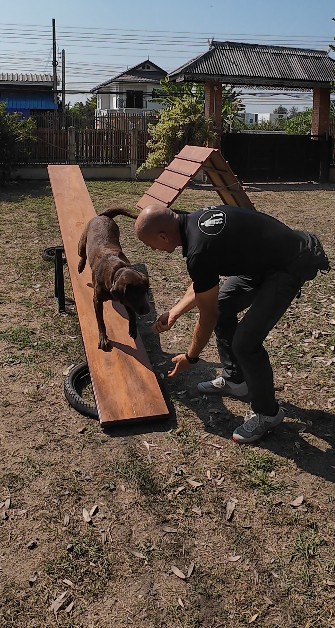
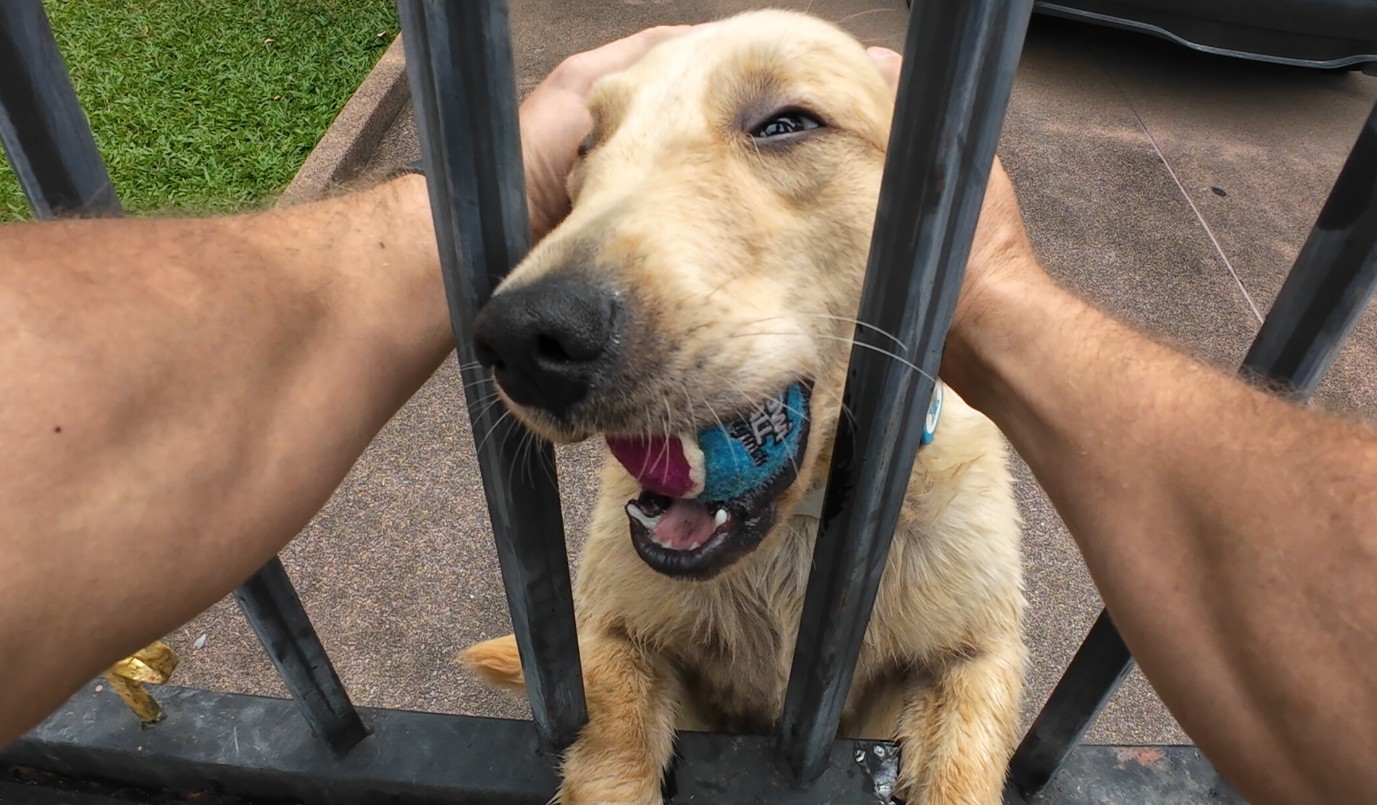
Connection starts where control ends.
You can’t train your dog out of fear. But you can listen, regulate, and guide them through. The moment you stop pushing is the moment trust begins.
Creating a Supportive Environment: Setting Your Dog Up for Success
Your dog’s environment plays a crucial role in managing and preventing freeze responses. By thoughtfully arranging their world, you can help them feel safer and more confident.
Physical Environment Modifications
Small changes can make a big difference:
Safe Spaces:
- Create a dedicated retreat area where your dog is never disturbed
- Use covered crates or cozy corners
- Ensure multiple escape routes in main living areas
- Provide elevated spaces for dogs who feel safer up high
Sensory Considerations:
- Use white noise to buffer sudden sounds
- Install curtains to control visual stimuli
- Provide soft lighting options
- Consider calming pheromone diffusers
Predictable Layout:
- Keep furniture arrangements consistent
- Store potentially scary objects (vacuum, broom) out of sight
- Create clear pathways through your home
- Designate specific areas for different activities
Routine as Medicine
Predictability is profoundly calming for freeze-prone dogs:
- Consistent meal times: Same time, same place, same bowl
- Regular exercise schedule: Predictable walks and play sessions
- Structured rest periods: Enforced nap times in safe spaces
- Ritual-based transitions: Special cues for activity changes
Managing Multi-Dog Households
If you have multiple dogs, consider:
- Separate feeding stations to prevent resource stress
- Individual training time to avoid competition
- Safe zones for each dog
- Monitoring inter-dog dynamics for subtle stress
- Rotating high-value resources to prevent guarding
The Human Element
Your behavior significantly impacts your dog’s sense of safety:
- Move slowly and predictably around freeze-prone dogs
- Avoid sudden loud noises or quick movements
- Maintain calm energy, especially during your dog’s sensitive times
- Create consistent interaction patterns
- Respect your dog’s communication about space needs
Recognizing Stress Escalation: Preventing the Freeze
The key to managing freeze responses is recognizing the early warning signs and intervening before your dog reaches their threshold. Like learning to read weather patterns, understanding your dog’s stress signals helps you navigate around the storms.
The Stress Ladder
Think of your dog’s stress as climbing a ladder. At the bottom rungs, they’re calm and social. As stress increases, they climb higher until, at the top, they freeze. Our goal is to recognize when they’re climbing and help them back down.
Bottom Rungs (Mild Stress):
- Slight tension in face
- Ears slightly back
- Mild panting
- Decreased interest in treats
- Looking away frequently
Middle Rungs (Moderate Stress):
- Visible body tension
- Tucked tail
- Excessive yawning or lip licking
- Whining or whimpering
- Attempting to move away
Upper Rungs (Severe Stress):
- Trembling
- Excessive panting
- Wide, “sticky” eyes
- Cowering or trying to hide
- Beginning to shut down
Top Rung:
- Complete freeze response
Individual Stress Signatures
Every dog has their unique way of showing stress. Some dogs are dramatic, clearly displaying their discomfort. Others are subtle, requiring careful observation to spot their signals. Keep a stress diary for your dog, noting:
- What were the circumstances?
- What did you notice first?
- How quickly did stress escalate?
- What helped them calm down?
- How long did recovery take?
Over time, you’ll become fluent in your dog’s personal stress language.
Intervention Strategies
When you spot early stress signals:
Immediate Actions:
- Increase distance from the trigger
- Use happy, upbeat voice (but not overwhelming)
- Engage in a simple, known behavior
- Offer high-value treats
- Move to a calmer environment
Calming Techniques:
- Slow, rhythmic petting (if your dog enjoys touch when stressed)
- Quiet, steady breathing (dogs often match our breathing)
- Gentle massage or TTouch
- Sniffing games or scatter feeding
- Quiet companionship without demands
What NOT to Do:
- Don’t force interaction with the trigger
- Avoid saying “it’s okay” repeatedly (this can become a stress cue)
- Don’t pick up small dogs unless they request it
- Avoid adding more stimulation to “distract” them
- Never punish stress signals

Recovery and Decompression: After the Freeze
How you handle the period after a freeze response can significantly impact your dog’s overall stress levels and future responses. Think of it as emotional first aid—gentle, supportive care that helps your dog’s nervous system return to baseline.
Immediate Post-Freeze Care
When your dog begins to emerge from a freeze:
- Give them space: Allow them to move away if they choose
- Speak softly: Use a calm, reassuring tone without overwhelming them
- Offer water: Stress can cause dehydration
- Avoid immediate demands: Don’t ask for behaviors or continue training
- Watch for stress shaking: Many dogs shake off stress physically—let them
The Decompression Timeline
Recovery from freezing isn’t instant. Your dog needs time to fully process and recover:
First Hour:
- Quiet environment
- No training or challenging activities
- Gentle, optional interaction
- Access to safe spaces
- Calming activities if desired (chewing, sniffing)
First 24 Hours:
- Reduced activity level
- Familiar, predictable routines
- Extra rest opportunities
- Avoid known triggers
- Gentle exercise like sniff walks
Following Days:
- Gradually return to normal activities
- Monitor for increased sensitivity
- Note any changes in behavior
- Adjust expectations accordingly
- Consider trigger relevance for future planning
Active Recovery Activities
Certain activities can help your dog process stress and return to balance:
Sniffing and Foraging:
- Scatter feeding in grass
- Snuffle mats
- Hidden treat hunts
- Leisurely sniff walks
- Novel (safe) scents to explore
Rhythmic Movement:
- Slow, meandering walks
- Gentle play with familiar toys
- Swimming (if enjoyed)
- Balance exercises
- Massage or gentle stretching
Calming Enrichment:
- Lick mats with frozen treats
- Appropriate chewing items
- Puzzle feeders at easy levels
- Calming music or audiobooks
- Gentle grooming (if enjoyed)
Building Resilience
Each successful recovery from a freeze response can build your dog’s resilience:
- Document what helped your dog recover
- Notice if recovery times decrease over time
- Celebrate successful navigation of mild stressors
- Build confidence through progressive challenges
- Maintain realistic expectations for progress
Remember, recovery isn’t just about returning to “normal”—it’s an opportunity to strengthen your bond and build your dog’s trust in their ability to handle stress. 🐾
Professional Support: When to Seek Help
While understanding the freeze response empowers you to better support your dog, some situations benefit from professional guidance. Knowing when to seek help—and what kind of help to seek—can make all the difference in your dog’s journey.
When Professional Help is Recommended
Consider consulting a professional if:
- Freezing is frequent: Daily or multiple times per week
- Duration is concerning: Freeze states lasting more than a few minutes
- Triggers are expanding: Your dog freezes in more situations over time
- Quality of life is affected: Freezing interferes with basic activities
- Other concerning behaviors emerge: Aggression, self-harm, or severe anxiety
- You feel overwhelmed: It’s okay to need support!
Types of Professionals
Veterinary Behaviorists:
- Veterinarians with specialized behavior training
- Can prescribe medication if needed
- Address medical causes of behavior
- Provide comprehensive behavior plans
Certified Dog Behavior Consultants:
- Extensive education in behavior science
- Specialize in behavior modification
- Cannot prescribe medication
- Often more accessible than veterinary behaviorists
Certified Professional Dog Trainers (CPDT):
- Focus on training and basic behavior issues
- May have additional specializations
- Good for general support and training
- Should refer complex cases to behavior consultants
Veterinary Support:
- Rule out medical causes
- Discuss anti-anxiety medications
- Provide health clearances
- Monitor overall wellbeing
What to Look for in a Professional
Choose professionals who:
- Use force-free, science-based methods
- Have specific experience with fear and anxiety
- Understand trauma-informed approaches
- Respect your dog’s emotional state
- Involve you in the treatment plan
- Provide clear, realistic expectations
- Offer ongoing support
Red flags to avoid:
- Promises of quick fixes
- Use of punishment or intimidation
- Dismissing the freeze response as “dominance”
- Lack of credentials or continuing education
- One-size-fits-all approaches
- Unwillingness to collaborate with other professionals
Medication Considerations
Sometimes, medication can help manage severe freeze responses:
- Anti-anxiety medications can lower overall stress
- Must be combined with behavior modification
- Requires veterinary oversight
- Not a “quick fix” but a tool in the toolkit
- May be temporary or long-term
- Side effects should be monitored
Building Confidence: Long-term Strategies for Freeze-Prone Dogs
While managing freeze responses is important, our ultimate goal is building your dog’s confidence so they freeze less often. This journey requires patience, creativity, and celebrating small victories along the way.
Confidence Through Choice
Empowering your dog to make choices builds confidence:
Training Choices:
- Multiple ways to earn rewards
- “Choice boards” with different activities
- Voluntary participation in training
- Respecting “no” as an answer
Environmental Choices:
- Multiple resting spots
- Various routes for walks
- Different toys available
- Control over social interactions
Daily Life Choices:
- When to eat (within reason)
- Where to eliminate on walks
- Which direction to explore
- When to engage or disengage
Systematic Confidence Building
Start Small: Begin with tiny challenges your dog can easily master:
- New treat hidden under a towel
- Slightly different walking route
- Novel toy introduced gradually
- Meeting one calm person
Progressive Challenges: Gradually increase difficulty:
- More complex puzzle feeders
- Longer duration activities
- Mild environmental changes
- Controlled social situations
Success Criteria: A challenge is appropriate if your dog:
- Shows interest, not fear
- Recovers quickly from mild stress
- Chooses to engage
- Shows pride in accomplishment
Enrichment for Emotional Growth
The right enrichment builds confidence while being enjoyable:
Sensory Enrichment:
- Different textures to explore
- Safe scent work
- Varied treat flavors
- Different surfaces to walk on
Cognitive Enrichment:
- Problem-solving games
- Clicker training new tricks
- Food puzzles
- Hide and seek games
Social Enrichment (When Ready):
- Parallel walks with calm dogs
- Controlled playdates
- Positive human interactions
- Observing others from safe distances
Tracking Progress
Document your dog’s journey:
- Keep a confidence journal
- Video progress over time
- Note decreasing freeze frequency
- Celebrate brave moments
- Share successes with your support team
Remember, confidence building isn’t linear. Your dog will have brave days and cautious days. What matters is the overall trajectory toward a more confident, resilient companion.
Common Threads
These success stories share important elements:
- Time: Real change takes months to years, not days to weeks
- Trust: Building relationship preceded behavior modification
- Choice: Dogs who have control freeze less
- Individuality: Each dog’s journey was unique
- Support: Professional guidance made a difference
- Patience: Progress wasn’t linear but ultimately transformative
Conclusion: Is Understanding the Freeze Response Right for You?
As we reach the end of our comprehensive journey through the freeze response, you might be wondering: “Is this knowledge relevant for me and my dog?” The answer is a resounding yes—whether you currently share your life with a freeze-prone dog or simply want to be a more informed, compassionate dog guardian.
Who Benefits from This Understanding?
Current Owners of Freeze-Prone Dogs: If your dog already shows freeze responses, this knowledge transforms frustration into compassion. You now understand that your dog isn’t being stubborn or defiant—they’re communicating in the only way their overwhelmed nervous system allows. Armed with this understanding, you can:
- Adjust your expectations and training approaches
- Create a more supportive environment
- Seek appropriate professional help
- Celebrate progress, however small
- Build a deeper, more trusting bond
Prospective Dog Owners: If you’re considering adding a dog to your family, especially a rescue with an unknown past, this knowledge prepares you for possibilities. You’ll be equipped to:
- Recognize early stress signals
- Provide appropriate support from day one
- Avoid common misinterpretations
- Build confidence proactively
- Create a trauma-informed home
Dog Professionals: Trainers, groomers, veterinary staff, and shelter workers encounter freeze responses daily. Understanding this response helps you:
- Modify handling techniques
- Educate clients compassionately
- Recognize when to pause procedures
- Advocate for freeze-prone dogs
- Implement trauma-informed practices
Anyone Who Loves Dogs: Even if your dog has never frozen, understanding this response makes you a better advocate for all dogs. You can:
- Recognize stress in dogs you meet
- Educate others about this misunderstood behavior
- Support friends with freeze-prone dogs
- Contribute to a more compassionate dog culture
- Deepen your appreciation for canine complexity
The Journey Forward
Living with a freeze-prone dog isn’t always easy, but it’s profoundly rewarding. These sensitive souls teach us patience, compassion, and the power of trust. They remind us that healing happens slowly, that small victories matter, and that love isn’t always about doing—sometimes it’s about simply being present.
If your dog freezes, remember:
- You’re not alone in this journey
- Progress isn’t always visible but is always happening
- Your dog’s freeze response doesn’t define them
- Every moment of connection is precious
- Professional support is available and valuable
A Message of Hope
To those of you supporting freeze-prone dogs: your patience matters more than you know. Every time you respect your dog’s freeze response instead of forcing them through it, you’re rewiring their brain for safety. Every gentle word during their frozen moments teaches them that humans can be trusted. Every day you choose understanding over frustration, you’re helping heal not just your dog, but contributing to a kinder world for all dogs.
The freeze response, while challenging, is ultimately a testament to the incredible adaptability of our canine companions. These dogs have learned to protect themselves in the only way they could. Now, with your understanding and support, they can learn that the world holds not just danger, but also safety, joy, and endless belly rubs.
Resources for Continued Learning
Your education doesn’t end here. Consider exploring:
Books:
- “The Other End of the Leash” by Patricia McConnell
- “Calming Signals” by Turid Rugaas
- “The Cautious Canine” by Patricia McConnell
- “Control Unleashed” by Leslie McDevitt
Online Resources:
- International Association of Animal Behavior Consultants (IAABC)
- Certification Council for Professional Dog Trainers (CCPDT)
- Fear Free Pets Initiative
- Veterinary Behaviorist Directory
Support Communities:
- Local force-free training groups
- Online forums for reactive/fearful dogs
- Social media support groups
- Local rescue organizations with behavior programs
Final Thoughts
As we close this comprehensive guide, remember that understanding the freeze response is more than academic knowledge—it’s a pathway to deeper connection with our four-legged friends. Every frozen moment is an opportunity for compassion. Every recovery is a celebration of resilience. Every day with these special dogs is a masterclass in patience, trust, and unconditional love.
Whether your dog freezes daily or you’ve never witnessed this response, you’re now equipped with knowledge that can transform lives. Use it wisely, share it generously, and always remember: behind every freeze is a dog doing their very best to navigate a sometimes overwhelming world.
Thank you for taking this journey with us. May your path forward be filled with understanding, progress, and countless moments of joy with your beloved companion. After all, the greatest gift we can give our dogs isn’t perfect training or a stress-free life—it’s our commitment to understanding them, supporting them, and loving them exactly as they are. 🐾🧡



